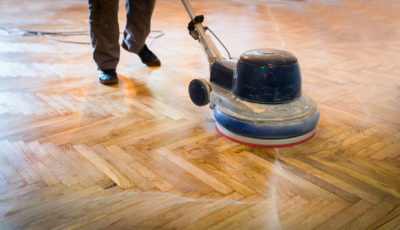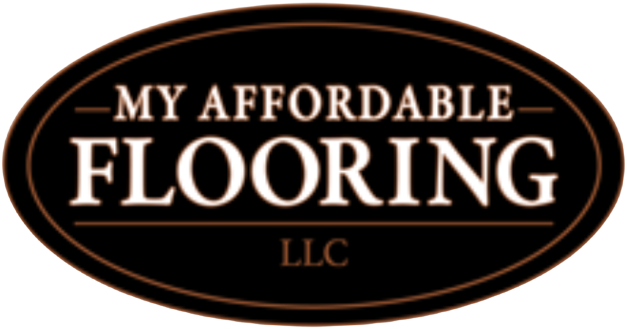Hardwood floors are a quintessential class act when it comes to interior decorating. But they come at a cost, and that cost is wear and tear.

Whether it’s from shoes, furniture, pets, or household accidents, the tragic reality of hardwood is that it degrades. But, with a little love and a lot of know-how, you can repair, refinish, and replace hardwood floors for an effect as good as new. Here are a couple of strategies for hardwood floor repairs:
Sanding
Sanding is usually the first step before making another, deeper repair or refinishing your hardwood floor, but it deserves some mentioning.
Using a belt sander with a lightweight sandpaper, you can remove deeper scratches along the grain of the wood.
A word of warning though: Make sure you know how to sand safely before you start. There’s a process to this, and if you make any serious missteps, the damages could cost more than the sanding is worth.
Wood Filler
Sometimes, a small ding or scratch is just not worth the time or effort of taking to your floor with a full-sized sander.
Whether it’s small holes from nails and furniture corners or larger dings from speaker cables and pet claws, a little wood filler goes a long way.
Depending on the damage, you may need to combine this filler with further sanding or even board replacement. Overall, though, this is a surprisingly versatile repair option well worth the investment.
Water Damage: Dehumidifying
In the case of a leak or extensive water damage, the best option is to just do everything in your power to dry that floor out as much as possible. Once it’s dried up, you’ll be able to make an assessment on how to repair or replace your hardwood floor.
Here are a few practical tips:
- Stop the source of the water. If it’s a leak, block it. If it’s a spill, mop and clean it up completely. Any remnants are going to keep soaking into your floor, so make sure you get it all.
- Put out an electric fan and point it at the wet area. If you have a dehumidifier, put that out as well. Anything that promotes airflow and sucks moisture out of the air can only help.
- If you have any devices for promoting humidity, turn them off as a matter of precaution. That’s freestanding humidifiers, as well as ones attached to furnaces.
Replacing Wood Panels Entirely
In a situation where the damage to a hardwood floor is extensive and repairs aren’t enough, be honest with yourself, and replace it.
As a precaution, identify the problem and act as soon as possible. If you can isolate the damage, you may be able to replace only a few boards, instead of the entire floor.
Cleaning
Our last point may seem obvious to you, but simple cleaning can often be enough to repair minor scratches or marrings on a hardwood floor.
Depending on the finish, cleaning can involve warm water and a towel, a floor polisher, or a sponge mop. Chemical cleaners can be effective as well, but make sure to research their effect beforehand, in case they can stain or bleach your floor.
Take Your Hardwood Repairs to the Next Level
There’s one very important reason hardwood floors are so popular: They look great.
When you have an accident and something spoils those good looks, there are options for repairing your cherished wood flooring.
Interested in refinishing, installing, and prepping your hardwood flooring in Milwaukee or Racine? Get more walk out of your wood today with My Affordable Flooring.
